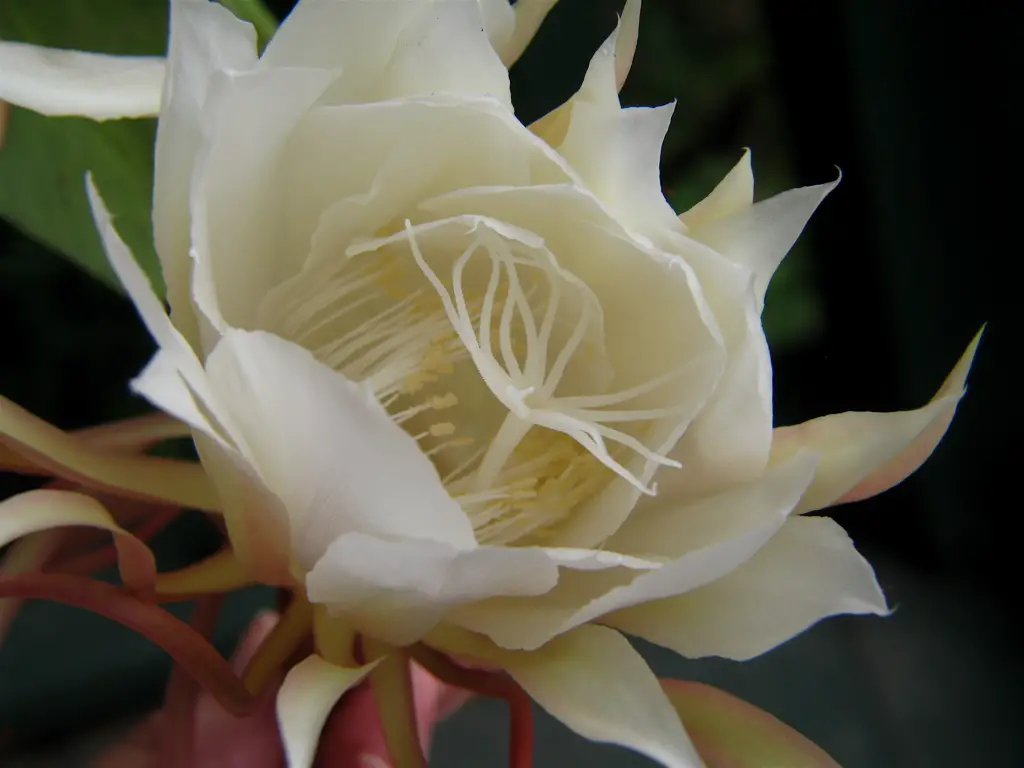The Night Blooming Cereus is a fascinating and mysterious plant that has captured the attention and hearts of gardeners and plant enthusiasts around the world. A member of the cactus family, this unique plant is known for its breathtaking nocturnal blooms. For most of the year, the Night Blooming Cereus may look rather unassuming with its thin, sprawling stems. However, the true spectacle occurs when the sun goes down.
In the darkness of night, this unpretentious cactus comes to life with large, fragrant flowers that can be over 8 inches in diameter. These blooms, often white or pale-colored, unfold slowly in the evening and last for just one night, withering by the following morning. The rare and ephemeral nature of its blooming has led to a sort of cult fascination with the plant.
The Night Blooming Cereus has a number of species and can be found in various regions. Though the care can differ slightly between species, they generally share the same fundamental care needs. Understanding these requirements can lead to the reward of witnessing the miraculous nightly blooms that have made this plant so renowned.
| Attribute | Details |
|---|---|
| Common Names | Night Blooming Cereus, Queen of the Night |
| Botanical Name | Various, including Selenicereus, Epiphyllum |
| Family | Cactaceae |
| Plant Type | Succulent/Cactus |
| Mature Size | 2-4 feet tall, variable width |
| Sun Exposure | Partial Sun to Light Shade |
| Soil Type | Well-draining Cactus Mix |
| Hardiness Zones | 10-11 |
| Native Area | Varies by species (Desert regions of America, Caribbean) |
Night Blooming Cereus Care
Caring for Night Blooming Cereus requires some patience and attention to detail. These plants thrive in warm, slightly humid environments and benefit from a consistent watering schedule that allows the soil to dry out between watering. They are relatively low-maintenance but do need a well-draining soil mix and the right balance of light and shade.
Fertilization during the growing season can support the development of the dramatic blooms. However, over-fertilization can be detrimental. The Night Blooming Cereus’s growth can be controlled and shaped with thoughtful pruning, and the plant can be propagated through cuttings or seeds, though the latter may require more effort.
Light Requirement for Night Blooming Cereus
Night Blooming Cereus prefers bright but indirect sunlight. Harsh direct sun can scorch the plant, while insufficient light may hinder bloom development.
Soil Requirements for Night Blooming Cereus
A well-draining cactus or succulent mix that includes sand or perlite is ideal for Night Blooming Cereus. It helps prevent root rot by allowing excess moisture to escape.
Water Requirements for Night Blooming Cereus
Watering should be done when the soil feels dry to the touch, generally every two weeks. Reduce watering during the winter dormant period.
Temperature and Humidity
Night Blooming Cereus thrives in temperatures between 60-80°F. Humidity levels around 40-60% are optimal but can be adaptable.
Fertilizer
A balanced, water-soluble fertilizer can be applied monthly during the growing season. Avoid over-fertilizing as it may inhibit blooming.
Pruning Night Blooming Cereus
Pruning can control the growth and shape of the plant. Remove dead or unhealthy stems and cut back any overly long or unruly growth.
Propagating Night Blooming Cereus
Propagation through stem cuttings is the most common method. Cuttings should be left to callus before planting in soil.
How To Grow Night Blooming Cereus From Seed
Growing from seed is possible but challenging. Seeds require a warm, moist environment to germinate and may take several weeks.
Common Pests & Plant Diseases
Spider Mites
These tiny pests can be controlled with insecticidal soap.
Root Rot
Caused by overwatering, root rot can be avoided with proper watering practices and well-draining soil.
Common Problems With Night Blooming Cereus
Lack of Blooms
This issue might be related to insufficient light, over-fertilization, or incorrect watering.
Wilting
Wilting could indicate either overwatering or underwatering. Assess soil moisture and adjust watering accordingly.
Pro Tips
- Provide bright, indirect sunlight but protect from harsh direct sun.
- Water only when the soil is dry to the touch.
- Use a well-draining cactus or succulent soil mix.
- Maintain humidity around 40-60% for optimal growth.
- Be patient and attentive, especially when waiting for the nocturnal blooms.




